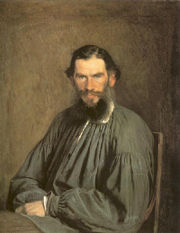|
|
 |
| Jim Worthey •
Lighting
& Color Research • jim@jimworthey.com
• 301-977-3551 • 11 Rye Court, Gaithersburg, MD 20878-1901, USA |
|
"Camera
Design Using Locus of Unit Monochromats"
James A. Worthey & Michael H.
Brill
Color Imaging
Conference 14
Scottsdale, Arizona, USA
2006 Nov. 9, 3:00 pm
The format of the meeting called for an "interactive presentation,"
meaning a poster, and before that a "spotlight session,"
featuring a 2-minute talk about each poster. 2 slides were shown, and
they are available as a
pdf file, CamDesLUM2slides.pdf .

Lev
Nikolaevich
Tolstoy (1828–1910)
2-minute Speech As Written and Read by
Michael H. Brill:
|
Tolstoy opened his novel Anna
Karenina with the sentence, "Happy families are all alike; every
unhappy family is unhappy in its own way." A similar thing can be said
about cameras: We could call a camera "happy" if it matches the same
colors the human does. That requires the camera to satisfy the
Maxwell-Ives
criterion---its sensitivity functions must be linear combinations of
those for
human color vision.
How well a camera
satisfies
the Maxwell-Ives criterion is captured by the Neugebauer index (in the
1950s),
which was advanced again by Berthold Horn at MIT (in the 1970s). But
one such
number cannot convey all kinds of
camera failure, and a camera designer must be able to see the kind
of
failure as a basis for possible improvements. To paraphrase Tolstoy,
"Happy cameras are all alike; every unhappy camera is unhappy in its
own
way."
We propose here a graphical
comparison that reveals any Maxwell-Ives failure---and more. The graphs
are
based on the Locus of Unit Monochromats (or LUM)---the
three-dimensional curve
traced out in any color space (human or camera) by the unit-power
monochromatic
lights. You can see here how the LUM captures all the information in
the
color-matching functions, shown here in an orthonormal basis. Jim
Worthey
presented these ideas at CIC12.
SLIDE
CHANGE
Our
idea in this poster is to compare the human's LUM with the
camera's. The camera sensors are orthonormalized in a way that aligns
the two
LUMs. We show five worked examples. Two cameras show
poor wavelength discrimination in a part of the spectrum.
Another LUM shows better wavelength
discrimination, but has other problems---some of which are solved by a
filter
over the camera. LUM
pictures may also give insight when a design departs from Maxwell-Ives,
but
pleases the customer. You may gain
new insights from our LUM pictures. Come visit us and try your hand at
camera
design using LUMs.
Use "back" button or choose:
 |
Copyright ©
2006 James A. Worthey, email: jim@jimworthey.com
Page last modified, 2006 November 14, 15:47
|
|


